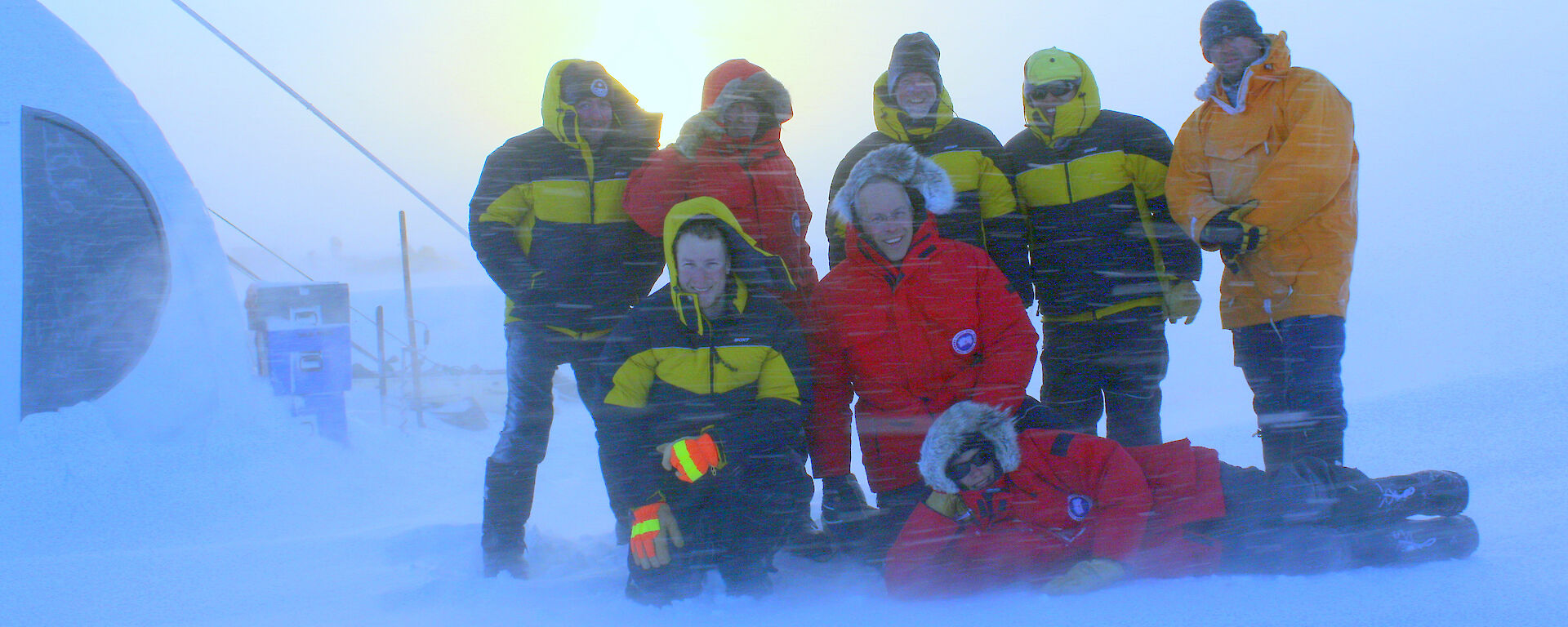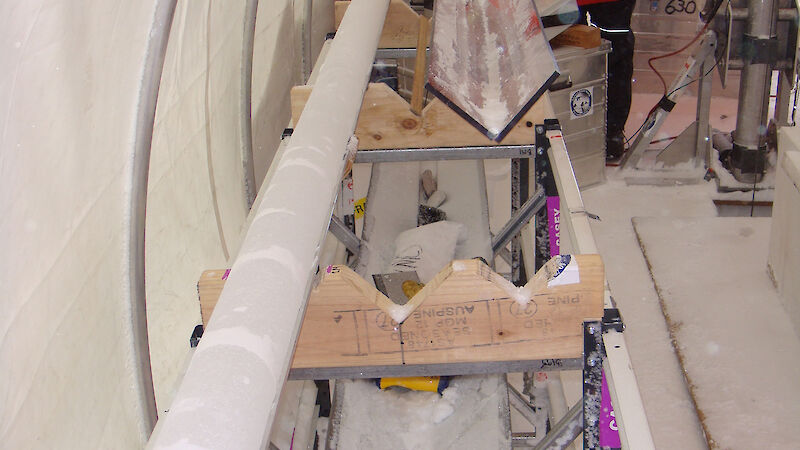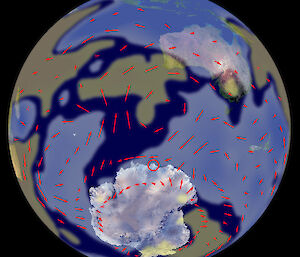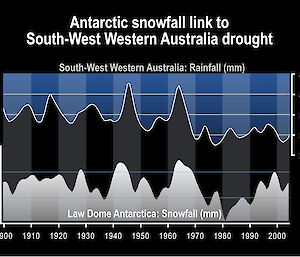Sitting in a battered tent in a 120km/h blizzard on Law Dome, celebrating Christmas 2008, Australia seems far, far away to me and my seven colleagues.
We are here because the place provides a unique location for drilling detailed ice core records of recent climate change. But in the past few years we have begun to appreciate that this isn’t as far removed from Australia as we might have thought; in fact the snow that is now burying us (covering our tent two metres deep) is providing some direct insights into climate changes in Australia. One of our team, from Denmark in Western Australia, knows first-hand about the drought that has gripped this southwest corner of Australia for over 30 years — his whole life. Over the same time, snowfall at Law Dome has increased and now we have some understanding of why.
The evidence of a climate link had been accumulating, like the snow, since the first ice cores were drilled on Law Dome in the 1980s. My colleague Vin Morgan, who pioneered this work, was ‘enjoying’ his 40th Antarctic anniversary on this snowy Christmas tent trip with us at Law Dome. Vin published a key paper in 1991 showing that snowfall had increased dramatically in the area after the late 1960s. Ice cores drilled since then show that this high snowfall was continuing and so we set about comparing the ice core records to meteorological records.
What we found was very interesting. Figure 1 shows how the prevailing winds and the amount of water vapour in the atmosphere depart from normal during high snowfall years at Law Dome. Perhaps not surprisingly, we see a large region of unusually moist air flowing down from south of Tasmania toward Law Dome and East Antarctica generally. What is less expected and striking is a region of unusually dry air flowing from south of Western Australia and across the southwest corner of the Australian continent.
Prompted by this, we looked specifically at Western Australia rainfall and found that for long-term records (which extend back to around 1900) we see low winter rainfall when the snowfall at Law Dome is high. Figure 2 shows a graph of winter rainfall averaged over southwest Western Australia and snowfall at Law Dome (depicted inverted so high snowfall is downwards). The two records are smoothed over several years to remove short-term weather effects, which add short term random variations, particularly because of snow surface irregularities.
The connection was obviously interesting, but the pivotal question is what it tells us about the causes of the drought and future prospects. This is where the ice core records are particularly useful because unlike the Western Australia climate records, we can investigate changes for many past centuries, rather than just the one for which we have meteorological observations. When we look at the long-term ice core record we see that the last 30 years have indeed been unusually snowy. Not only is it the most extreme such period in 750 years of data, it is so far above average that it doesn’t appear to belong in the natural range of variations that would be expected.
Another clue comes from the pattern of atmospheric circulation. The high snowfall pattern, with its southward flow of air from the Tasman Sea and northward flow of dry air to Western Australia (Figure 1), is part of a Southern Hemisphere pattern (called the zonal wave three circulation) that has increased in intensity in recent decades. This increase is attributed in some climate models to ozone depletion and increased CO2, pointing to a human contribution.
So where does this lead? The work provides a new set of climate observations that can be used to help test and develop climate models. It also suggests that the present shift to high Law Dome snowfall, and drought in southwest Western Australia, is unusual. As the hole in the ozone layer 'heals' in coming decades, this particular driver of climate patterns will diminish, but the influence of CO2 in driving this northward/southward flow will continue. Models will be the key to understanding the balance between these two influences.In the meantime, the ice cores offer even more information to help understand the changes. Salt blown in from the sea, sulphur chemicals from algae in the oceans, and water from the distant mid-latitudes, all carry signatures of climate variability. We need more of this information, which is why sitting in a tent in a blizzard drilling an ice core is a compelling way to spend Christmas.
TAS VAN OMMEN
Ice, Ocean, Atmosphere and Climate program, Australian Antarctic Division
More information
- van Ommen, T.D. and Morgan, V.I. (2010) Snowfall increase in coastal East Antarctica linked with southwest Western Australian drought. Nature Geoscience 3: 267–272. doi:10.1038/NGE0761
- Watch Dr van Ommen explain his research on the ABC science show Catalyst





